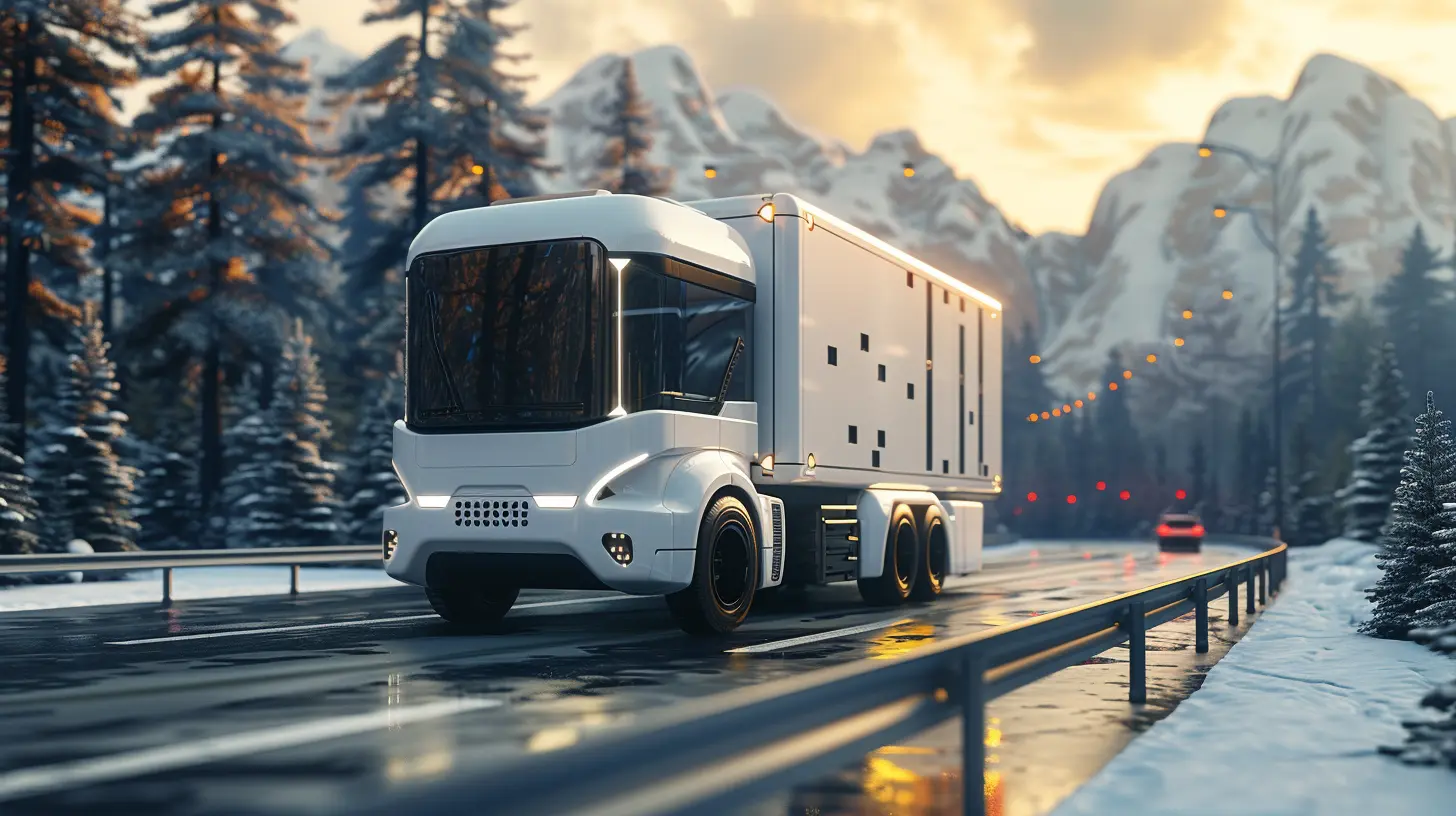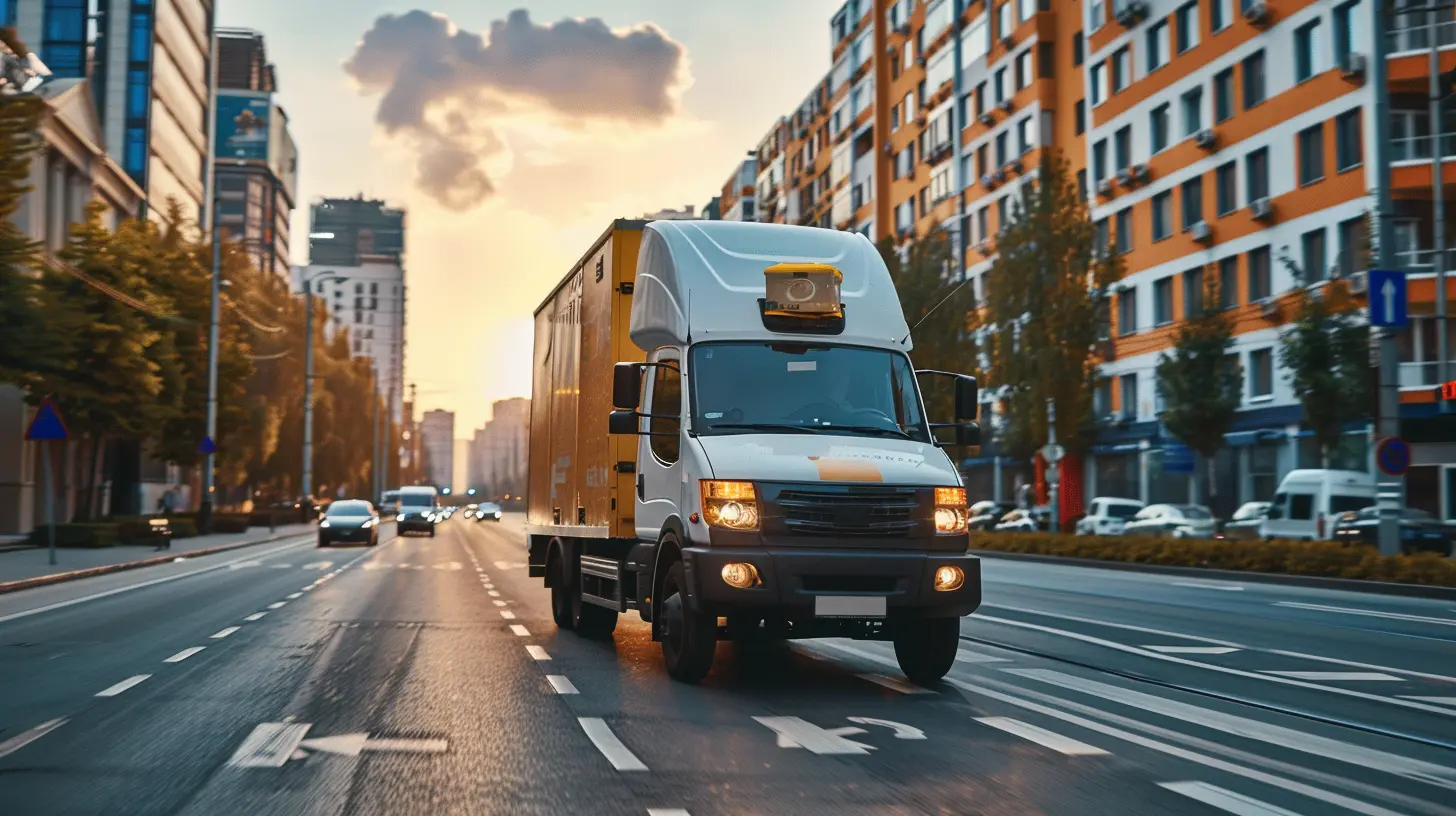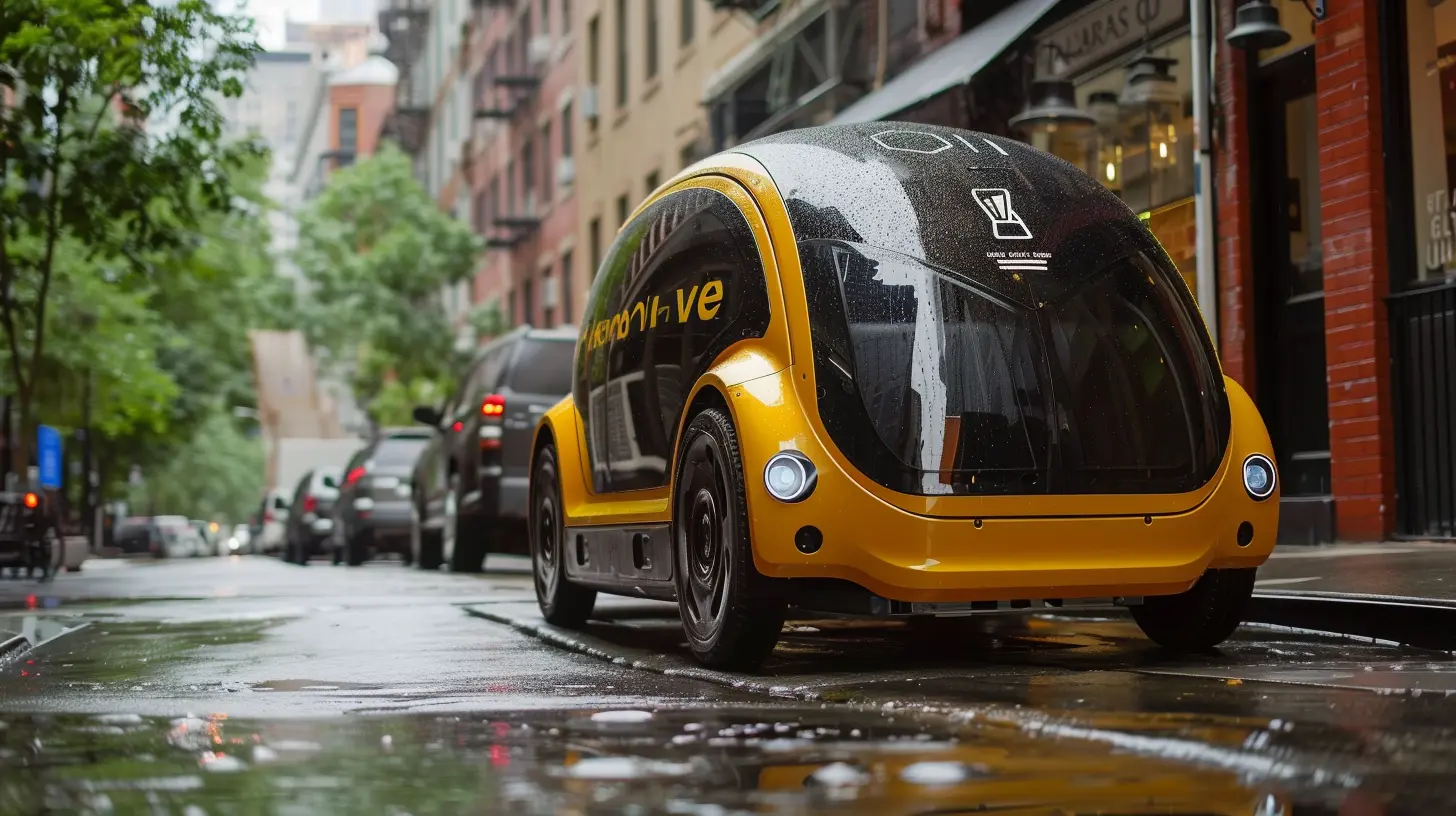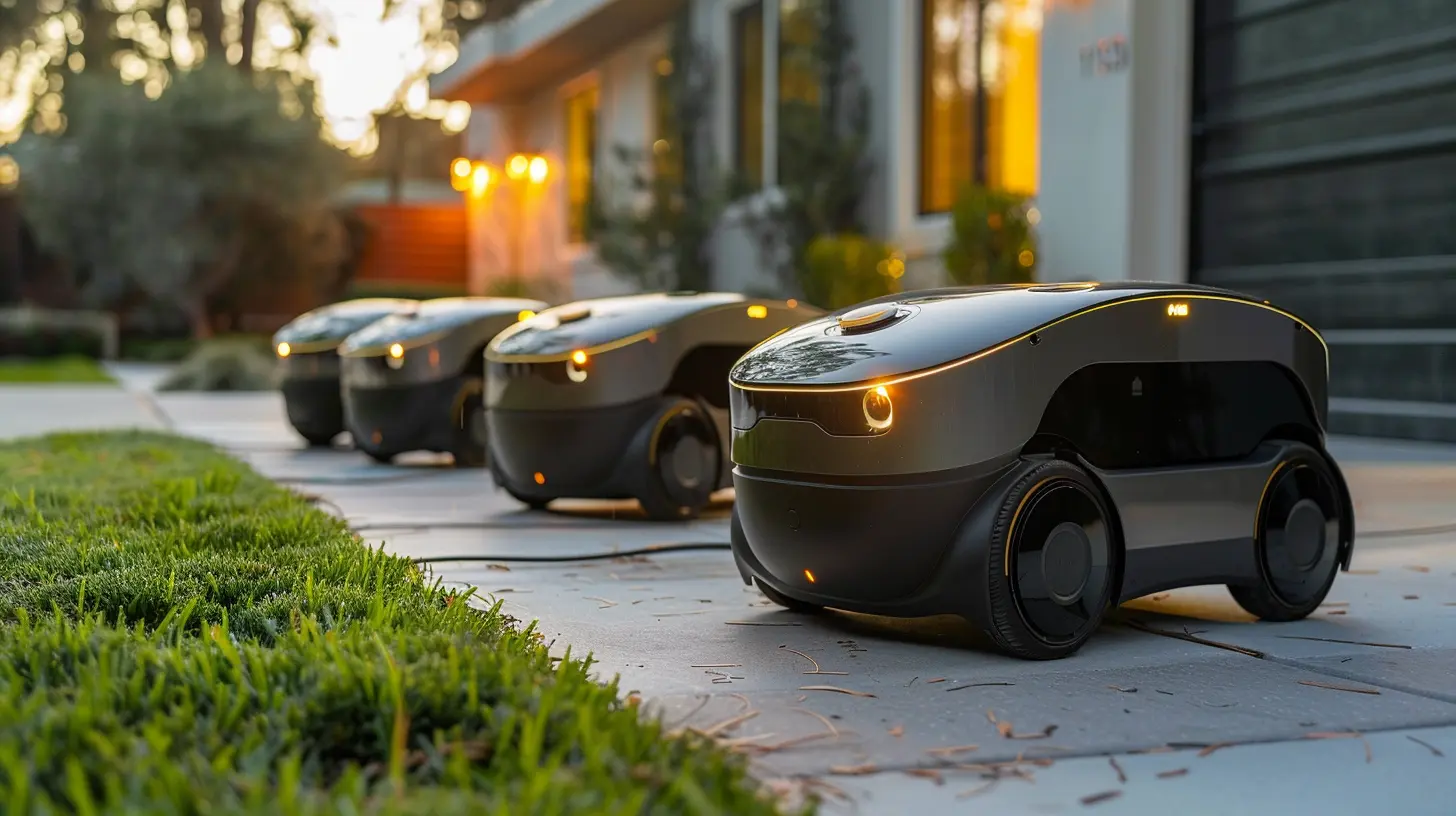Autonomous Delivery Vehicles: The Future of Last-Mile Logistics
19 October 2025
Imagine a world where packages, groceries, or even your meal deliveries arrive at your doorstep without a single human hand involved. Instead, small, futuristic vehicles navigate streets, avoiding obstacles, and delivering your order right on time. Sounds like something straight out of a sci-fi movie, right? Well, believe it or not, autonomous delivery vehicles are already hitting the streets, and they’re set to revolutionize the future of last-mile logistics.

What Exactly Are Autonomous Delivery Vehicles?
Let’s break it down. Autonomous delivery vehicles (ADVs) are self-driving units designed to transport goods directly to consumers without the need for human input. Think of them as tiny, robot-like vehicles that can independently navigate through cities, suburbs, or even rural areas, delivering things like groceries, takeout, or packages.You’ve probably heard of self-driving cars, but ADVs take that concept to the next level. Instead of transporting people, they move goods, and they’re designed specifically for the challenges of last-mile delivery—the final leg of the delivery process that often involves navigating crowded streets, apartment complexes, and even footpaths. This is where things get tricky, and why ADVs are so exciting for businesses and consumers alike.

Why Last-Mile Logistics Matters
Before we dive deeper into autonomous delivery vehicles, it’s important to understand why the focus on last-mile logistics is such a big deal. The "last mile" refers to the final stage of the delivery process—the part where a package goes from a local distribution center to the customer’s front door.Believe it or not, this last leg is often the most expensive and inefficient part of the whole logistics chain. It accounts for nearly 50% of the total delivery costs for businesses. Why? Because it's usually labor-intensive (think about the delivery driver), and it often involves traffic congestion or delays in finding a specific address. Basically, it’s a logistical nightmare that’s ripe for innovation.
So, when people talk about improving last-mile logistics, they’re really talking about saving time, cutting costs, and creating a more efficient system for getting stuff where it needs to be. Autonomous delivery vehicles could be the key to unlocking that future.

How Autonomous Delivery Vehicles Work
Sensors And Navigation Systems
Okay, so how do these little robots actually get around without crashing into things? The magic lies in their advanced sensors and navigation systems. ADVs are equipped with a combination of cameras, LiDAR (Light Detection and Ranging), GPS, and other sensors that allow them to "see" their surroundings and make real-time decisions.These sensors help them detect pedestrians, cyclists, and cars, effectively navigating through busy urban environments or more peaceful suburban streets. The GPS ensures they know exactly where they’re going, while their onboard AI helps them learn from their surroundings and improve over time. It's like giving them a brain, allowing them to make decisions on the fly.
Communication Systems
ADVs also need to communicate with the world around them. They’re often connected to cloud-based systems that allow them to receive real-time updates on traffic conditions, delivery schedules, and even weather forecasts. This way, they can adjust their routes on the go, avoiding any potential delays.Some ADVs even have the ability to communicate with each other. Imagine a small fleet of these vehicles working together to deliver packages in a coordinated, efficient manner. It’s kind of like watching a team of ants work together to move food to their colony—each one has a role, and they work in harmony to get the job done.
Delivery Process
Once the vehicle arrives at its destination, the delivery process can vary. Some ADVs come with compartments that open once the recipient provides a unique code or uses a mobile app to verify their identity. Others may use robotic arms to place the package at the doorstep. The entire process is designed to be seamless and contact-free.
Benefits of Autonomous Delivery Vehicles
Now, you might be wondering, “Why should we care about autonomous delivery vehicles? What’s in it for me?” Well, there are several key benefits that make ADVs a game-changer for both businesses and consumers.1. Cost Efficiency
One of the biggest advantages of ADVs is cost savings. Since these vehicles don’t require a human driver, businesses can significantly cut down on labor costs. And with fuel-efficient or electric-powered ADVs, operational costs can be further reduced. These savings can trickle down to consumers in the form of cheaper delivery fees. Who doesn’t like saving money, right?2. Environmentally Friendly
Many autonomous delivery vehicles are designed to be electric, meaning they produce zero emissions. This is a huge win for the environment, especially when you consider how much pollution traditional delivery trucks contribute to cities. By reducing the number of gas-guzzling vehicles on the road, ADVs can help create cleaner, more sustainable urban environments.3. Reduced Traffic Congestion
Speaking of fewer vehicles, ADVs can also help cut down on traffic congestion. Traditional delivery services often involve large trucks making multiple stops, clogging up streets and contributing to traffic jams. Autonomous vehicles, especially smaller ones designed for short distances, can reduce the need for these larger trucks, making city streets more navigable.4. Faster Delivery Times
With the ability to operate 24/7, autonomous delivery vehicles could offer faster and more flexible deliveries. Imagine ordering something late at night and having it delivered to your doorstep while you’re asleep. No need to wait for a delivery window or worry about missing the delivery guy—you’ll wake up to your package already waiting for you.5. Contactless Deliveries
In a world where concerns about health and hygiene are more prevalent than ever, contactless delivery has become a priority. ADVs are a perfect solution for this. Since there’s no human interaction involved, you can receive your deliveries without any direct contact—ideal for maintaining social distancing or avoiding unnecessary exposure to germs.Challenges and Limitations
Of course, as exciting as autonomous delivery vehicles are, they aren’t without their challenges.1. Regulatory Hurdles
One of the biggest obstacles to widespread adoption is regulation. Autonomous vehicles are still relatively new, and many countries don’t yet have clear laws governing their use. Questions around liability, safety, and privacy will need to be addressed before ADVs can become a common sight on our streets.2. Safety Concerns
While ADVs are designed to be safe, there’s always the risk of accidents. What happens if one of these vehicles malfunctions or misinterprets its surroundings? Ensuring that ADVs are as safe as possible will be crucial to gaining public trust and avoiding potential disasters.3. Infrastructure Challenges
Not all cities are currently equipped to handle a fleet of autonomous delivery vehicles. Roads, sidewalks, and other infrastructure may need to be upgraded to accommodate ADVs, especially in older cities where space is limited. Furthermore, these vehicles may face difficulties in harsh weather conditions like snow or heavy rain, which could disrupt their sensors and navigation systems.4. Job Displacement
As with any major technological advancement, there’s a downside in terms of job displacement. Traditional delivery drivers might find themselves out of work as ADVs become more common. While new jobs will be created in areas like vehicle maintenance and AI development, it’s still a concern that needs to be addressed.The Future of Last-Mile Delivery
So, where does all this leave us? The truth is, autonomous delivery vehicles are still in their early stages, but the potential they offer is enormous. As technology continues to evolve, we’re likely to see more ADVs on the road, delivering everything from groceries to gadgets.In the not-so-distant future, you could be sitting on your couch, ordering a snack, and within minutes, a tiny robot could zip up to your door with your order. And with companies like Amazon, FedEx, and smaller startups investing heavily in this technology, the future of last-mile logistics is looking more autonomous than ever.
In the end, autonomous delivery vehicles represent more than just a cool tech innovation—they’re a glimpse into a more efficient, cost-effective, and environmentally-friendly future. While there are still some challenges to overcome, the potential benefits far outweigh the drawbacks. So, don’t be surprised if one day, your next delivery is brought to you by a robot.
all images in this post were generated using AI tools
Category:
Autonomous VehiclesAuthor:

John Peterson
Discussion
rate this article
1 comments
Betsy Cruz
Autonomous delivery vehicles are not just a trend; they represent a transformative leap in last-mile logistics. Embracing this technology will redefine efficiency and convenience, setting new standards for speed and reliability in the delivery industry.
October 23, 2025 at 4:56 AM


